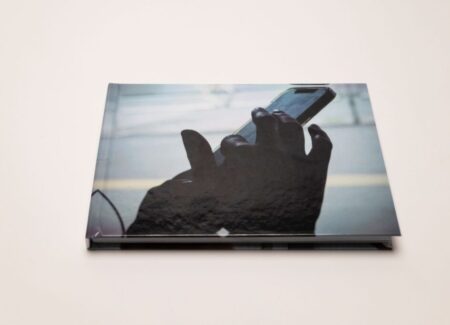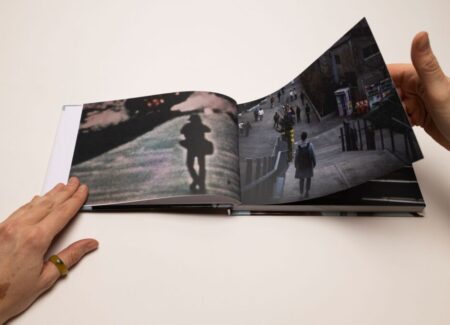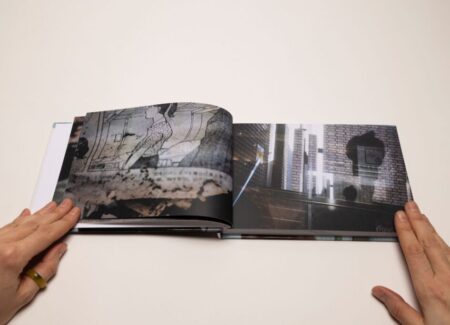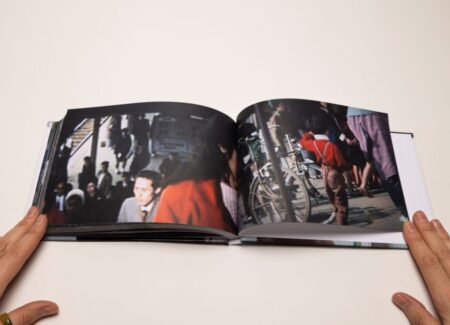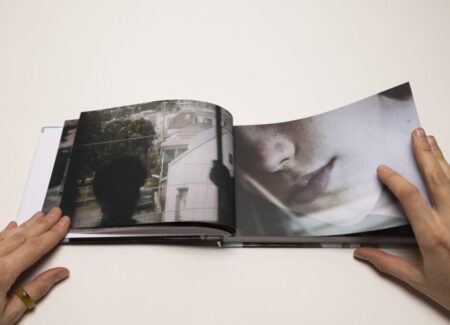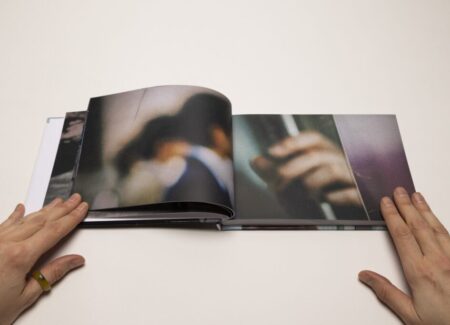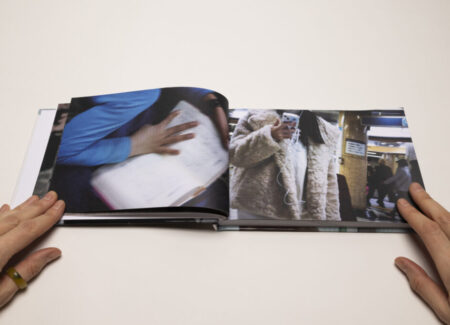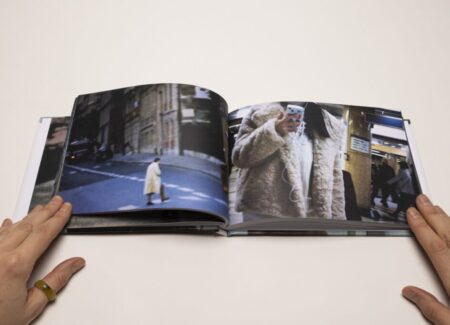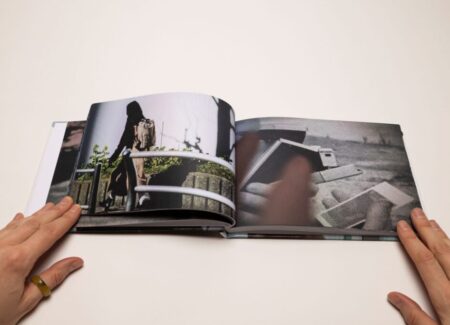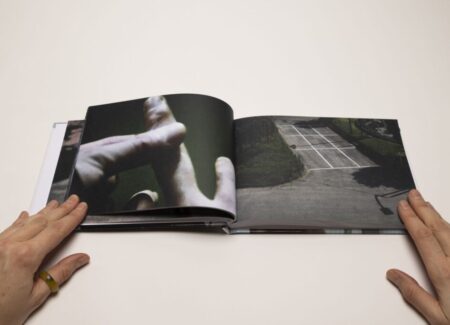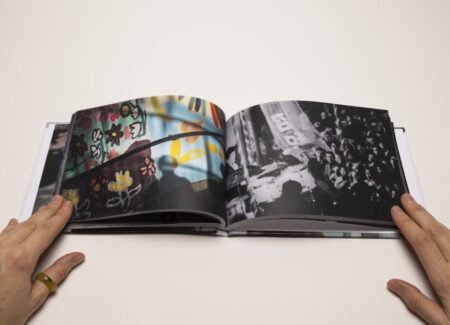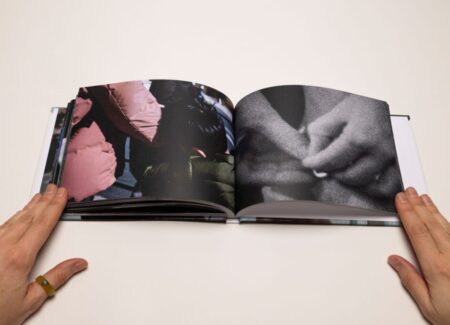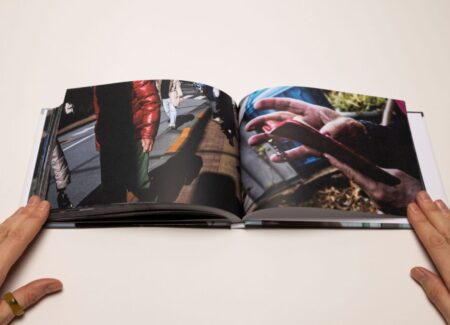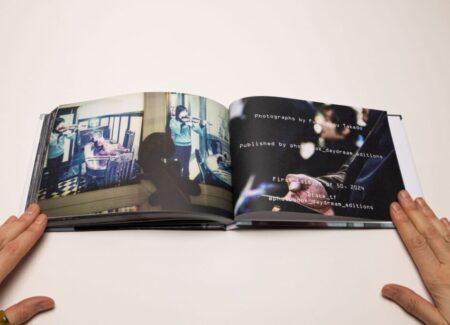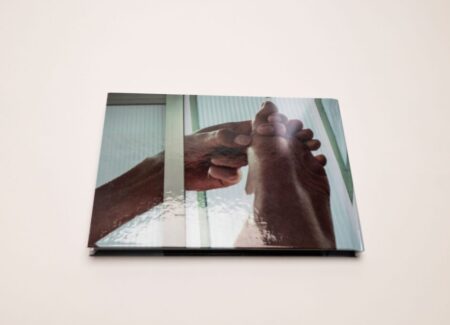JTF (just the facts): Published in 2024 by Photobook Daydream Editions (Instagram link here). Hardcover (6 x 9 inches), 120 pages, with 118 color photographs. In an edition of 50 copies. (Cover and spread shots below.)
Comments/Context: Fumitsugu Takedo, a Tokyo-based street photographer, focuses on fragmented landscapes, and often incorporates his own images as shown on computer screens and then re-photographed. His new photobook titled Ambience Decay was recently released by Photobook Daydream Editions, a publishing initiative by the Los Angeles-based photographer and photobook collector Andrew Seitz. Seitz has made it his mission to share the work of a new generation of Japanese photographers, like Satoh Kakeru and Tetsuta Tsurumoto (reviewed here).
Ambience Decay is a relatively small horizontally-oriented hardcover book. A photograph of dark hands touching a smartphone takes up the entire cover, with the photographer’s name and book title placed on the spine. Inside all of the photographs, two per spread, are printed full bleed, creating an uninterrupted visual flow. There are no page numbers or captions, and a short text appears closer to the end. The intimate photobook is well printed, and feels pleasant to hold and flip.
Ambience Decay transports us to the busy streets of Tokyo, dotted by advertisements, smartphones, and other screens, blurring the line between media fiction and everyday reality. Takedo’s snapshots often get close, capturing fragments of hands, fingers, feet, technology, and other everyday moments. The very first spread pairs a photo of a man walking down stairs, shot from the back, with a blurry image (most likely a re-photographed picture) of what looks like a silhouetted soldier. Takedo’s photographs are often shot from unusual perspectives, disorienting us; often it is not entirely clear what’s going on, or where we are, yet his vision is captivating.
People are present in many of the photographs, yet they are often photographed from the back or the side, and in other instances, they appear blurred and shadowed. Many of Takedo’s pictures capture pedestrians with their smartphones as they walk on the streets. These close up snapshots reflect the fleeting elements of our daily lives. A photo of a street scene seen through a glass is paired with a shot of a train stop with nearly everyone consumed by their phones. His snapshots are busy with information, almost claustrophobic, with very little empty space. The bustling energy of the city comes strongly through the photographs.
In the midst of these snapshots, Takedo also adds shots of his own photographs seen on screens or printed, yet the distinction between them is not always obvious, making the entire experience even more mysterious. The glare on a photo of a woman walking hints that it is likely rephotographed from a screen; the image on the other side of the spread also has layers of pictures, blurry fingers on top of other snapshots of hands holding photos. Other spreads offer multiple blown up details of digital images. In this way, Takedo’s snapshots can be a first hand observation or a second hand screen, and often it is hard to tell, creating a sense of swirling disorientation. Through the process of re-photographing his own images and adding screenshots from films important to him, Takedo indirectly re-introduces his own presence into the project.
A low resolution black-and-white shot of a woman’s hand sliding the carriage of a typewriter (perhaps a screen grab from a movie) is placed next to a blurry close up of a hand holding a phone and a receipt while also balancing a plastic bag on a pinky. A couple of pages later two cupped hands (another screen grab) are paired with a close up of a woman’s shoes seen at street level. A slightly blurry fashion shot of a woman holding a brown leather purse under her arm is re-photographed from a computer screen, and placed next to an extreme close up of a woman in a brown coat walking on a street. The similarities between two images again blur the line between reality and media fiction.
Ambience Decay is another excellent book from Photobook Daydream Editions. It is a subtly elegant publication, offering an energetic layer of Tokyo life while also reflecting on much wider questions of seeing and looking.
Collector’s POV: Fumitsugu Takedo does not appear to have consistent gallery representation at this time. As a result, interested collectors should likely follow up directly with the artist via his Instagram page (linked in the sidebar).
